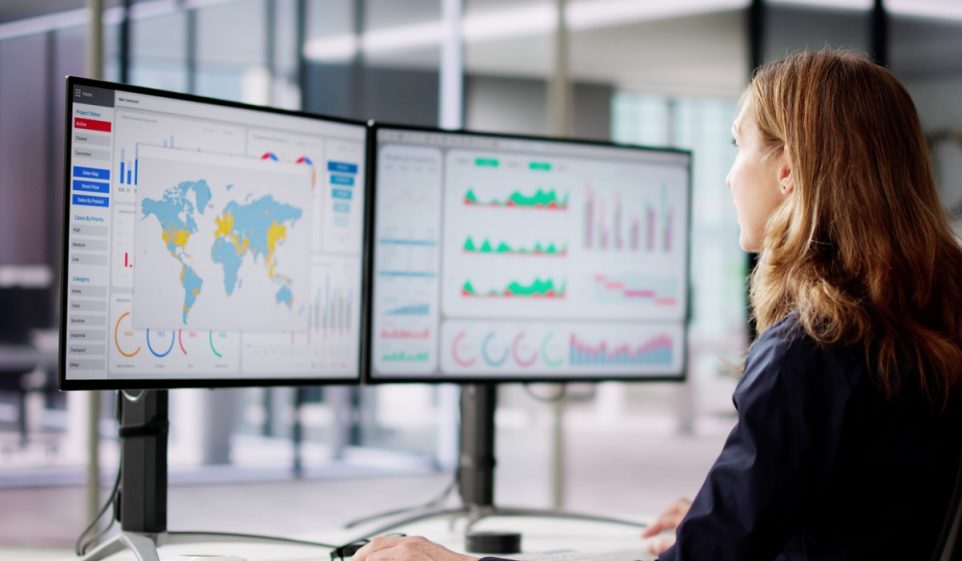How Do Computers Work? Desktops and Laptops Explained

Welcome to the riveting universe of computers, where digital magic materializes, and the impossible becomes possible. Whether you’re coding an innovative application, battling extraterrestrials in an exhilarating video game, or simply surfing the web, this intricate system of components and software is tirelessly laboring behind the scenes. But how exactly does this digital dynamo operate?
As we peel back the layers of these complex devices, prepare to discover the fascinating world within these technological marvels. This article will take you on an enlightening journey, traversing the intricate alleys of computer hardware and software, demystifying the technological jargon, and unlocking the secrets of your everyday digital companions.
How a Computer Processes Information
The central processing unit, or CPU, is often called the computer’s brain. It’s responsible for executing instructions and performing calculations. The CPU consists of several cores, which allow it to handle multiple tasks simultaneously.
The motherboard is the main circuit board that connects and controls all computer components. It communicates between the CPU, RAM, hard drive, and other devices. The motherboard also houses slots for expansion cards, such as graphics and sound cards.
Random access memory, or RAM, is temporary storage that allows the computer to access and process data quickly. It stores information that the CPU and applications are actively using. RAM plays a crucial role in determining the speed and efficiency of a computer.
The hard drive is the permanent storage device in a computer. It stores all the data, including the operating system, applications, and user files. The hard drive uses magnetism to read and write data on spinning solid-state drives (SSDs).
Desktop towers, the large cases that house most of a computer’s hardware, are widely known for their upgradeability and power. They contain critical components like the motherboard, CPU, GPU, and power supply, offering extensive customization options for specific needs, whether for gaming, professional work, or general use.
The Role of Software in Computers
The operating system is the software that manages a computer’s hardware and software resources. It provides a user interface and allows users to interact with the computer. Popular operating systems include Windows, macOS, and Linux.
Application software refers to programs that perform specific tasks like word processing, spreadsheet calculations, or photo editing. Examples of application software include Microsoft Office, Adobe Photoshop, and Google Chrome.
System software includes programs that assist in managing and operating the computer system. This includes device drivers, utility programs, and security software. System software ensures the smooth functioning and security of the computer.
The Graphics System in a Computer
A graphics card, a video card, or GPU (graphics processing unit) is responsible for rendering and displaying images, videos, and animations on a computer. It offloads the task of processing graphics from the CPU, resulting in better performance and visual quality.
Video memory, or VRAM, is the dedicated memory on a graphics card that stores textures, shaders, and other data required for rendering graphics. The amount of VRAM affects games’ resolution, detail, performance, and other graphically intensive applications.
Monitor resolution refers to the number of pixels displayed on the screen. Higher resolutions result in sharper and more detailed images. Common resolutions include 1080p (Full HD), 1440p (2K), and 2160p (4K). The graphics card and monitor must support the same resolution for optimal display quality.
Exploration of Input and Output Devices
Keyboards and mice are essential input devices that allow users to interact with the computer. Keyboards are necessary for typing and issuing commands, while mice enable precise cursor movement and clicking. There are also alternate input devices like touchscreens and stylus pens.
Monitors are output devices that display the visual output from the computer. They come in various sizes and resolutions, and some offer additional features like high refresh rates for smoother gameplay. The quality of the monitor greatly affects the viewing experience.
Printers and scanners are commonly used output and input devices, respectively. Printers allow users to produce physical copies of documents and images, while scanners convert physical documents and images into digital form. These devices are essential for printing documents or digitizing old photos.
The Network and Internet Connectivity
Network interface cards (NICs) are hardware components that enable computers to connect to networks. They provide a physical connection to Ethernet cables or wireless connectivity to Wi-Fi networks. NICs are necessary for accessing the Internet and local network resources.
Ethernet and Wi-Fi are two common methods of network connectivity. Ethernet uses cables to establish a wired connection between devices, providing high-speed and reliable data transfer. On the other hand, Wi-Fi enables wireless connections, allowing devices to connect to the Internet without physical cables.
Computers connect to the Internet through various means, including broadband connections such as DSL and cable or cellular networks. Internet service providers (ISPs) offer different plans and speeds, allowing users to access vast online resources and services.
Your Trust, Our Core Commitment
At Rising Tech, earning and maintaining your trust is the cornerstone of our mission. We're dedicated to transparency, impartiality, and the relentless pursuit of truth in every article, review, and recommendation we publish. Our commitment to these principles ensures that you, our valued reader, are always equipped with reliable and unbiased information. Let us be your trusted guide in the ever-evolving world of technology.